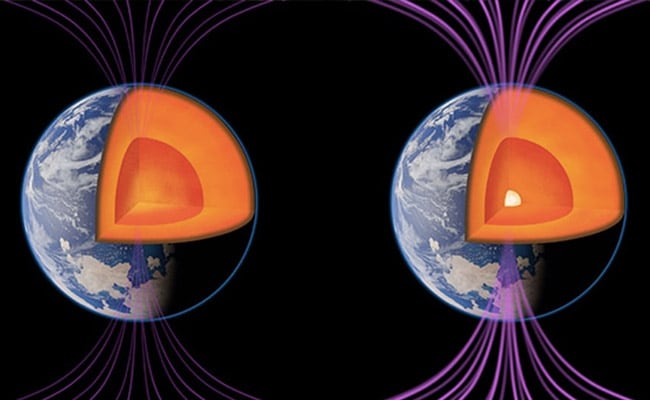The research proved a theory, which was that ocean water accompanied subducting slabs and entered the transition zone.
According to a global research, scientists have found a reservoir of water three times the size of all the oceans beneath the Earth’s surface. The water has been discovered in the region where the upper and lower mantles of the Earth meet. According to ANI, the research team used methods including Raman spectroscopy and FTIR spectrometry to examine a single diamond that developed 660 metres below the Earth’s surface.

The study proved what had previously just been a theory—that ocean water travels with subducting slabs and so enters the transition zone. This implies that the interior of the Earth is a part of our planet’s water cycle.
Prof. Frank Brenker from the Institute for Geosciences at Goethe University in Frankfurt notes that “these mineral transformations significantly restrict the movements of rock in the mantle.” Mantle plumes, rising columns of heated rock from the deep mantle, for instance, may come to a stop just below the transition zone. Mass that is moving in the opposite direction also stops moving.
Brenker claimed: “It is frequently difficult for subducting plates to penetrate the entire transition zone. As a result, there is a huge graveyard of these plates in this region underneath Europe.”
However, up until this point, it was unclear what long-term consequences the “sucking” of material into the transition zone would have on its geochemical makeup and whether there would be more water present. Brenker clarifies: “Additionally, deep-sea sediments are piggybacked into the interior of the Earth by the subducting slabs. Large amounts of CO2 and water can be stored in these sediments. But up until now, it was unknown exactly how much entered the transition zone in the form of more stable, hydrous minerals and carbonates, making it difficult to determine whether or not there was actually significant water storage.”
The current circumstances would undoubtedly support such. Wadsleyite and ringwoodite are dense minerals that can store a lot of water, unlike olivine at shallower depths. In fact, they can store so much water that the transition zone could hypothetically absorb six times as much water as our oceans. So, according to Brenker, “we understood that the border layer has a huge potential for holding water. However, we weren’t sure if it actually accomplished that.
The solution has now been revealed by a global investigation in which the Frankfurt geoscientist participated.The study team examined an African diamond from Botswana. At 660 kilometres below the surface, where ringwoodite predominates and is the interface between the transition zone and the lower mantle, it was created. Even among the extremely rare diamonds of super-deep origin, which make up about 1% of all diamonds, those from this location are extremely uncommon. The studies showed that the stone has a lot of ringwoodite inclusions, which have a lot of water in them. The study team was also able to determine the stone’s chemical make-up. It was almost identical to virtually every piece of mantle rock discovered in basalts found anywhere in the world.This demonstrated that the diamond unquestionably originated from a typical component of the Earth’s mantle. According to Brenker, “this study has shown that the transition zone is not a dry sponge, but holds substantial amounts of water,” and “this also gets us one step closer to Jules Verne’s idea of an ocean inside the Earth.” The distinction is that instead of an ocean, Brenker said that there is hydrous rock, which neither feels wet nor drips water.

